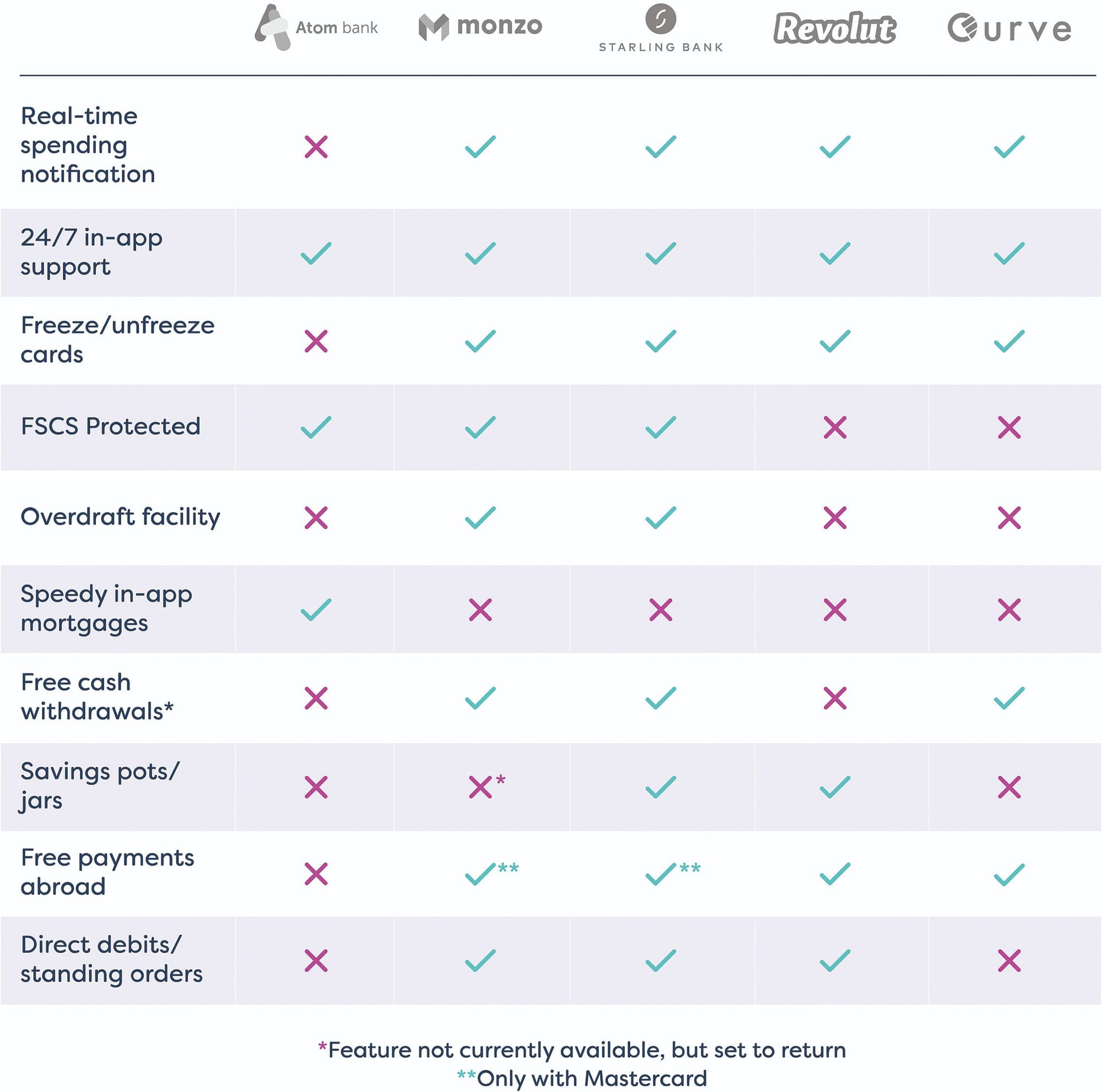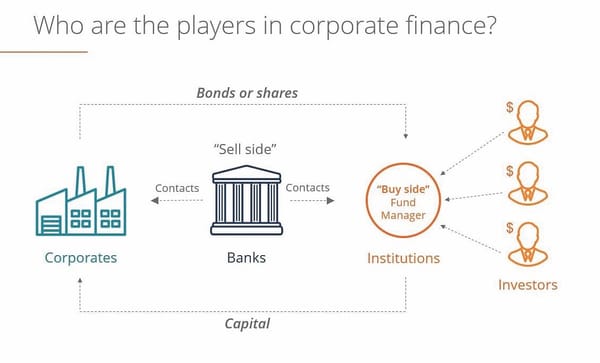New Finance vs. Old Finance

Non-traditional banks, such as Revolut and Starling, among many others, have disrupted the banking industry. Banking had traditionally been a difficult sector for startups due to the regulations that dictated the establishment and operation of a bank. Following the 2008 financial crisis, regulatory frameworks around the world were significantly overhauled.
In the UK, the 2012 Financial Services Act was written in a way which enables new companies to enter and compete in the banking industry. The changes in legislation combined with continuous technological innovation led to the set-up of a new type of banks, which provide services exclusively online as they do not have local branches. Customers use mobile apps to manage their accounts and can receive support through online chat. Most ‘established’ startups now provide customers with a debit card, which has the same characteristics as a traditional bank’s cards, such as an account number and a sort code, as shown in Figure 1 above.
Advantages
What makes this new type of bank special? In broad terms, they allow their customers greater control over their accounts. Particularly, they notify their customers about the details of a transaction immediately after it has been completed. They also generate monthly expenses reports and forecasts about future spending. One of the most important features is the ability to set savings goals, which has now been replicated in the mobile applications of their established competitors. A large number of customers also appreciate the bill-splitting feature which has proven useful in several social contexts. In terms of currency exchange fees, they differ significantly from their conventional rivals as they tend not to charge commission for transactions abroad. This decision renders them significantly more attractive for customers wishing to spend money outside of their home country without incurring fees from mainstream banks. Finally, certain challenger banks allow their users access to cryptocurrency trading.
What about security?
The sign-up process for these banks is just as rigorous as that of established institutions. Upon creating an account, users are asked to submit a digital copy of their passport or national identity card as proof of identity and provide several identifying details, such as their address, amongst others. As far as accessing an existing account is concerned, these newly created financial institutions offer the highest safety standards possible. Their authentication methods include fingerprint scanning along and facial and voice recognition alongside the regular PIN code. In the event that a card has been lost or stolen, customers can login to their account to immediately freeze it. Needless to say, the card can be unfrozen in the exact same manner, if it is recovered. Perhaps the most important concern potential customers will have is: Can they trust these banks with their savings? These institutions are regulated by the Financial Services Authority (FCA) and the majority of them covered by the Financial Services Compensation Scheme (FSCS), which guarantees deposits up to £85,000. Those wishing to create a new account should definitely check whether the provider they are interested in has gained regulatory approval and access to the FSCS. Months-long delays have been observed between the launch of an app-only bank and its receiving the pertinent licence. Moreover, these app-based banks tend to partner with fully licensed banks, which are the ones that actually hold customers’ savings.
How do these challengers vary amongst themselves?

Over time, most of these challenger banks seek to emulate their traditional competitors as closely as possible. However, the way they have started their businesses has been different as they have sought to target their applications towards specific audiences. On one hand, there are those which shine in international money transfers. They can be used in hundreds of different currencies and at a significantly reduced cost compared to high-street banks. Revolut has been one of the most prominent in this area. It charges no extra fees for global money transfers and spending abroad and also uses the Interbank Exchange Rate, which helps save consumers even more. The Interbank Exchange Rate is the rate used by two banks to transfer capital between themselves. Banks tend to charge a fee on top of the rate used to make the exchange, a trend that Revolut has decided not to embrace for transactions between Monday and Friday, when the currency markets are open. On the other hand, there also exist those focused on a more conventional banking experience, such as Starling. This kind of upstart institutions offer a current account and usually, though not always, pay interest on their customers’ balance. The list of services available typically includes overdraft; challenger banks clearly state what fees they will charge for using their overdraft feature. In March 2017, Starling launched the UK’s first app-based current account. Monzo and Berlin-based N26 soon followed suit. Another UK company, Monese, can appeal to foreign nationals and freelancers because it aims to remove as many obstacles as possible from the account set-up process. It lets people create a bank account without needing to provide a permanent UK address. Figure 2 offers insight into the features offered by the digital-only firms currently active in the digital bank space. financial services sector. The figure demonstrates that certain companies, such as Revolut and Curve, specialise in international transactions, while Starling, Monzo and Atom Bank, among others, emulate the functionality of their domestic competition.
What are the challenges they face?
The most obvious difficulty faced by a bank operating based on a purely digital infrastructure is the reliability of said infrastructure. Customers cannot manage their finances unless they are connected to the Internet via Wi-Fi or mobile data. The December 2018 O2 outage demonstrated once again that Internet access should not be considered a given. The number of customers impacted reached 32 million; nobody can guarantee that events like this will cease to occur in the future. As Figure 2 illustrates, the functionality offered by the new entrants in the banking space can sometimes be quite limited. Customers cannot yet find all of the services provided by a traditional retail institution, such as credit cards, loans and direct debits. This limitation will especially be felt by older customers, who expect a bank to provide all of the above-mentioned features.
Therefore, the risk of these applications not expanding beyond their young-adult user base still persists. How popular these financial services providers will become directly affects their profitability. Most currently enjoy a high valuation. However, questions remain about if and how can they build a business model which will lead them to profitability.
For instance, Monzo saw its net losses increase by 54 percent in February of 2019, following a massive personnel expansion in order to cope with its increasing user base. Challenger bank’s answer to the issue of profitability has centered around revenue generation through monthly subscription services and in-app marketplaces. They usually offer customers core services via their free tiers and seek to entice them to upgrade to premium tiers in order to gain access to niche services.
As far as marketplaces are concerned, they generally appeal to business users by allowing them to link their accounts to a variety of business tools, including professional chat and accounting applications. The ultimate aim is to limit their reliance on individual consumers and expand their reach into the business community.
Conclusion
Digital-only banks have indisputably disrupted the banking sector. With a host of features related to helping customers assume more control over their spending and simplifying transactions, they have managed to attract a significant user base and forced traditional competitors to adapt to an ever-changing technological landscape.
Given the challenges they currently face, it is difficult to argue that they can fully replace high-street providers. Nonetheless, their presence benefits the financial services and fintech sectors as a whole. In the end, more competition is always considered desirable from consumers’ point of view.









